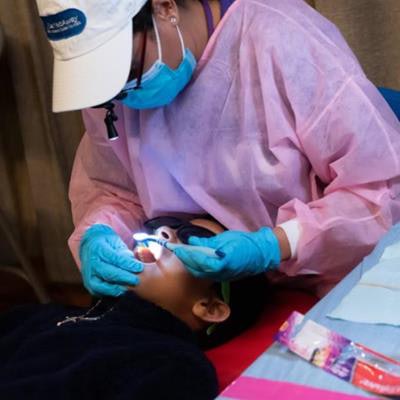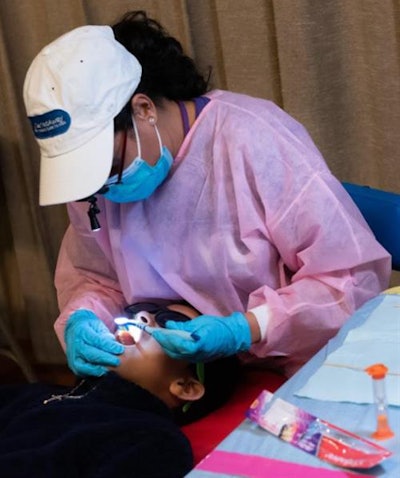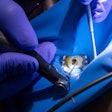
A school-based oral health program resulted in a 50% reduction in untreated cavities in a study of 7,000 elementary students in the U.S. The findings were published in the March issue of the Journal of the American Dental Association.
School-based cavity prevention programs targeting students in need have the potential to improve children's oral health while reducing health disparities and the cost of care, according to the authors.
"This school-based comprehensive caries prevention program was associated with substantial reductions in children's untreated caries, supporting the concept of expanding traditional practices to include office- and community-based aerosol-free care," wrote the group, led by Dr. Richard Niederman, professor and chair of the department of epidemiology and health promotion at New York University College of Dentistry (JADA, March 2021, Vol. 152:3, pp. 224-233).
 Students receive oral care via a school-based dental program. Image courtesy of NYU Photo Bureau.
Students receive oral care via a school-based dental program. Image courtesy of NYU Photo Bureau.The prevalence of cavities in children worldwide exceeds 30% and has not changed much in the past 30 years, the authors noted. Approximately one in five elementary school students has a minimum of one untreated cavity. School-based caries prevention programs have been shown to help those who do not have access to dental care or who experience other socioeconomic challenges.
In the study, the researchers aimed to show that complete school-based dental care can be clinically effective and eliminate barriers to treatment. Between 2004 and 2010, they conducted a caries prevention program in which dental hygienists provided free dental care to 6,927 students at 33 public elementary schools located in suburban, urban, and rural Massachusetts. The schools were Title I institutions, a U.S. Department of Education designation, where at least 50% of the students receive free or reduced-cost lunches.
The children who participated in the study were between the ages of 5 and 12. The research was supported by the U.S. National Institute on Minority Health and Health Disparities, DentaQuest, the Bingham Trust, the Massachusetts Legislature, and the American Dental Trade Alliance.
During twice-per-year visits, the children in the study had their teeth examined and received treatment such as fluoride varnish, sealants, and minimally invasive fillings to stabilize cavities without drilling. Also, hygienists explained good oral hygiene habits and referred students with more complex dental needs to community dentists.
Niederman and colleagues estimated the change in prevalence of untreated caries over time. Students from the six schools initially enrolled in the study were followed by the researchers for up to five years. Those from 27 schools that were enrolled later were followed for up to three years.
Children in the program experienced a more than 50% reduction in untreated cavities in baby and permanent teeth after six visits. The prevalence of untreated cavities in students from the initial six schools dropped from 39% to 18%. In the second group of schools, prevalence fell from 28% to 10%, the researchers found.
Though the evidence suggests that in-school caries prevention programs benefit children's oral health, a limitation of the study was that it did not include a control group of children who did not receive care, they noted.
Regardless, state-sponsored programs are valuable, especially for those who experience challenges in accessing dental care, the authors concluded.
"This 50% reduction is a change that ... would be unlikely in the absence of school-based caries prevention," they wrote.




















